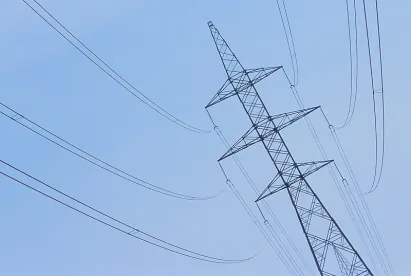Facing the traditional energy sector’s uncertain future and the decreased cost of producing renewable energy, many companies have taken to generating their own power. Manufacturers may be in an ideal position to do the same through “net metering.” Some companies, including giants such as Google and Apple, have been so successful generating their own power that they sell excess energy back to the grid. In considering such practices, manufacturers need to weigh the costs and benefits and monitor local legislative agendas.
An Opportunity for Independence
Renewable energy sources’ viability constantly grows. For example, since 2009, the price of solar power in the U.S. has fallen over 70%. Coupled with this cost reduction, solar panel efficiency has drastically increased. But, solar power costs more than traditional energy sources. To incentivize investment in solar, the federal government provides a 30% investment tax credit that was recently extended through 2019.
Many manufacturers epitomize a candidate to generate electricity independently. First, manufacturers represent some of the largest consumers of domestic energy. Second, manufacturers often have expansive production facilities and warehouses with ample roof space to house a large number of solar panels.
In adopting renewable resources, manufacturers face a challenge in matching the demand for electricity with the supply from renewables sources. Solar panels and wind turbines are at the mercy of the weather and produce varying amounts of electricity throughout the day. This unpredictable generation rarely matches manufacturers’ demand for electricity, at times producing less than needed, and other times producing more than needed. When production falls below demand, a utility company supplies the extra needed electricity. When solar production exceeds demand, manufacturers may capitalize on the excess electricity generation through net metering.
What about Net Metering?
“Net metering” programs mandate that power-generating companies (and individuals) may sell excess energy back to the utility provider for use in the electrical grid. Large “grid-scale” producers sell excess power back to the grid at wholesale prices, while residential generators have received retail rates. State and local government set those rates and the limits on the use of net metering. The California Public Utilities Commission (“CPUC”) recently expanded net metering to projects generating more than 1 MW, a positive ruling for commercial users.
While net metering benefits solar owners, utility companies have raised concerns. Utility companies assert that net metering programs may raise costs for non-participating users. A recent MIT study also raised concerns about the sustainability of net metering at a retail price. As a result, legislatures have amended net metering programs.
In 2016, Massachusetts raised the cap on the amount of energy that could be sold back into the grid, but reduced the net metering rate by 40% on most large-scale projects. Similarly, Nevada in 2015 passed a bill that reduced the net metering rate, while increasing the fixed fee net metering customers paid. Interestingly, however, the Nevada legislature in June 2017 passed a measure partially reversing the effects of the 2015 bill. The 2017 measure provides that rooftop solar customers will initially be compensated for net metering at 95% of the retail rate, although the net metering rate will decrease over time each time as additional capacity of rooftop solar is installed in Nevada.
The utility companies’ arguments generally apply only to residential participants because large grid scale solar projects exact wholesale rates for electricity. The designated rate is dependent on applicable regulation and the utility’s own set rates. Depending on the state and the utility provider, the net metering may occur at the retail rate that customers pay for electricity, the wholesale rate that utilities pay for electricity, or anywhere in between.
Experts predict that a virtuous cycle has begun and will lead to an eventual phase out of fossil fuel production. The debate about net metering will continue in the coming years, and manufacturers have a strong interest. As changes affect the energy market, manufacturers must be aware of their regulatory environment and make informed decisions about their energy sourcing.
Effects of Battery Storage Solutions
As utility companies’ resistance to net metering programs continues to grow, rooftop solar developers and their customers are increasingly turning to battery storage solutions as a way to help offset the anticipated future restrictions on such programs. With battery storage, a battery is installed together with the rooftop solar system, and the customer can store electricity generated by the solar system in the battery, at least partially eliminating the need to sell power back to the utility under a net metering program. Excess electricity generated during the daylight hours, when the solar system is producing electricity, can be stored in the battery and then used during the evening, when the solar system is not producing. In this way, battery storage solutions serve as a hedge against the possible future restriction or elimination of net metering programs, because rooftop solar customers can retain the benefit of excess power generated by the solar system, even if the customers are not able to sell such excess power back to the utility. Additionally, many rooftop solar systems do not generate enough power to fully offset the power that the customer uses on-site, so the customer ends up still buying a significant amount of electricity over the grid from the utility. With a battery storage system in place, the customer’s need to purchase power from the utility can be substantially reduced.
Government, industry and customer interest in battery storage solutions has been increasing at a rapid rate as arguments against net metering by utility companies continue to persist. In May 2017, Maryland passed a law offering tax credits for energy storage systems, making it the first state to pass such a law in the United States. Bloomberg New Energy Finance predicts that the lithium-ion battery market for energy storage will be worth at least $239 million between now and 2040. Industry titans such as Lockheed Martin, Caterpillar and Mercedes-Benz have all recently made entries into the battery storage market. Industry observers predict that we will see battery storage solutions continue to play an increasing role in commercial and residential rooftop solar installations as the technology continues to improve and net metering programs face continued opposition.
Please note Summer Associate, Jonathan Siragusa was a contributing author of this post.




 />i
/>i

